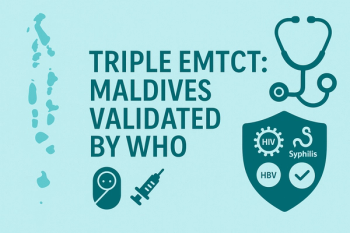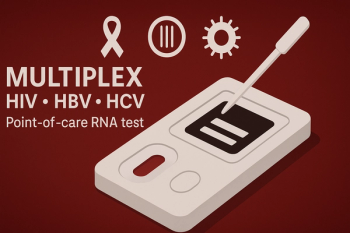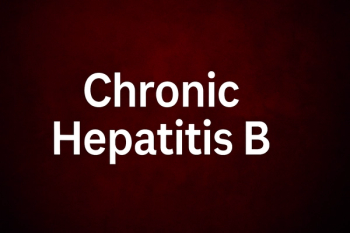
- December 2016
- Volume 1
- Issue 2
Epclusa: What Have We Learned?

It is estimated that 2.7 to 3.9 million individuals are living with chronic hepatitis C virus (HCV) infection in the United States.1 Recent reports document an increased mortality related to HCV infection, noting that death from this chronic infection has now surpassed mortality from 60 other notable infectious diseases.2
Until very recently, treatment for chronic HCV consisted of a combination regimen that included subcutaneous injection of pegylated interferon alfa and oral ribavirin that resulted in poor virologic response rates and frequent adverse events (AEs). However, in 2011, two first-generation protease inhibitors, telaprevir and boceprevir, were approved by the US Food and Drug Administration (FDA) for the treatment of chronic HCV.3-7 These agents increased the number of patients who achieved a sustained virologic response (SVR), but they did little to improve tolerability, as they were associated with a significant amount of toxicities and still required co-administration with interferon and ribavirin.
In December 2013, the first direct-acting antiviral (DAA), sofosbuvir, was approved.8 Following the release of several other DAAs, the first pan-genotypic combination tablet, sofosbuvir/velpatasvir (Epclusa) was approved in June 2016.9 This review summarizes the efficacy, safety, contraindications, and relevant drugdrug interactions for sofosbuvir/velpatasvir.
FDA APPROVAL / EFFICACY
The FDA approved sofosbuvir/velpatasvir on June 28, 2016, for the treatment of chronic HCV genotypes 1 through 6.9 The combination of sofosbuvir, a NS5B polymerase inhibitor, and velpatasvir, an NS5A replication complex inhibitor, is administered as one tablet daily (sofosbuvir 400 mg/velpatasvir 100 mg), with or without food for 12 weeks, regardless of genotype, for patients who have no findings of cirrhosis or who have compensated cirrhosis.10 For patients with decompensated cirrhosis, ribavirin therapy should be co-administered for the 12-week treatment duration. Among patients with renal insufficiency (ie, estimated creatinine clearance <30mL/min), sofosbuvir/velpatasvir should not be used due to pharmacokinetic studies demonstrating increased serum levels of sofosbuvir and its metabolite in this population.10,11
Four phase 3 trials were conducted that led to the approval of sofosbuvir/velpatasvir.12-14 The initial study evaluating the effects of sofosbuvir/velpatasvir in both previously treated and treatment-naïve patients infected with HCV genotypes 1, 2, 4, 5, or 6 who had varying stages of hepatic fibrosis was conducted in 2014 (ASTRAL-1).12 The FDA subsequently requested that a separate trial evaluating the use of sofosbuvir/ velpatasvir in HCV genotype 2 (ASTRAL-2) and another in HCV genotype 3 (ASTRAL-3) be conducted, each against an active comparator group.13 A subsequent study, ASTRAL-4, was then conducted to determine the effects of sofosbuvir/velpatasvir in patients with HCV genotype 1-6 and decompensated cirrhosis.
ASTRAL-1
ASTRAL-1 was a multicenter, double-blind, placebo-controlled trial. Patients 18 years or older with treated or untreated chronic HCV genotype 1, 2, 4, 5, or 6 were enrolled.12 Previously treated patients who received an interferon-containing regimen and did not achieve an SVR were targeted to ensure there was a mix of previously treated and treatment-naïve patients. Patients who had a history of hepatic decompensation or hepatocellular carcinoma, previously discontinued HCV treatment because of an AE, or received an NS5B inhibitor or any NS5A inhibitor were not eligible for enrollment. Those enrolled were randomly assigned in a 5:1 ratio to receive treatment with sofosbuvir/ velpatasvir or placebo, one tablet daily for 12 weeks. In addition, they were randomized according to genotype and whether or not cirrhosis was present. Patients with genotype 5 did not undergo randomization due to its low prevalence, so they were enrolled in the active treatment arm only. The primary endpoint of ASTRAL-1 was SVR at 12 weeks (SVR12), defined as an HCV RNA level <15 IU/mL at 12 weeks after the end of treatment in all patients who received at least one dose of sofosbuvir/velpatasvir or placebo. The secondary endpoints included the rate of AEs and treatment discontinuation because of AEs.12
Overall, patients who received 12 weeks of sofosbuvir/ velpatasvir achieved a 99% rate of SVR12. The rates of SVR12 were very similar regardless of HCV genotype. Rates of SVR12 were 98% for genotype 1a; 99% for genotype 1b; 100% for genotypes 2, 4, and 6; and 97% for genotype 5. Similarly, for patients with compensated cirrhosis and previously treated, the SVR rates were 99% and >99%, respectively.12
ASTRAL-2 AND ASTRAL-3
ASTRAL-2 and ASTRAL-3 were both multicenter, randomized, controlled, phase 3 trials that evaluated patients with chronic HCV.13 Patients enrolled in these trials were randomized in a 1:1 ratio to receive either sofosbuvir/velpatasvir for 12 weeks, standard therapy of sofosbuvir/ribavirin for 12 weeks if they had genotype 2, or standard therapy of sofosbuvir/ribavirin for 24 weeks if they had genotype 3. The doses of ribavirin were determined according to body weight and administered orally twice daily. The primary endpoint evaluated in these trials were the same as those evaluated in the ASTRAL-1 trial.13
In ASTRAL-2, SVR12 was observed in 99% of patients with genotype 2 who received sofosbuvir/velpatasvir, compared with 94% of those who received sofosbuvir/ ribavirin for 12 weeks, and was found to be statistically superior. In ASTRAL-3, SVR12 was obtained in 95% of patients with genotype 3 who received sofosbuvir/ velpatasvir versus 80% of those who received sofosbuvir/ ribavirin for 24 weeks. Once again, the SVR12 rate was superior in those treated with sofosbuvir/velpatasvir compared with those treated with standard therapy for genotype 3.13
ASTRAL-4
In order to evaluate the efficacy of sofosbuvir/ velpatasvir among patients with decompensated cirrhosis, both previously treated and treatment-naïve, ASTRAL-4 was initiated. ASTRAL-4 was a phase-3, open-label trial evaluating patients with genotypes 1 through 6, both previously treated and treatmentnaïve, who had decompensated cirrhosis, defined as Child-Pugh-Turcotte class B.14 The primary endpoint of the evaluation was SVR12. Eligible patients were randomized to one of three treatment arms: sofosbuvir/ velpatasvir for 12 weeks, sofosbuvir/velpatasvir plus ribavirin for 12 weeks, or sofosbuvir/velpatasvir for 24 weeks. As expected, the majority of patients had genotype 1 (78%), followed by genotype 3 (15%), genotype 4 (3%), and genotype 6 (<1%), with no patients included with genotype 5.14
SVR12 rates in patients with genotype 1 were highest among those who received sofosbuvir/velpatasvir plus ribavirin (96%), followed by those who received sofosbuvir/velpatasvir for 24 weeks (92%), and patients who received sofosbuvir/velpatasvir for 12 weeks (88%). Similarly, in patients with genotype 3, SVR12 was highest among patients who were treated with sofosbuvir/ velpatasvir plus ribavirin, achieving SVR12 rates of 85% compared with 50% of patients who received sofosbuvir/ velpatasvir alone for both 12 or 24 weeks achieving SVR12.14
When looking at the ASTRAL-1 through -3 trials collectively, there were 1,035 patients treated with sofosbuvir/velpatasvir for 12 weeks, with 98% achieving a SVR12. In addition, ASLTRAL-4 demonstrated higher SVR rates in those with Child-Pugh-Turcotte class B cirrhosis who received sofosbuvir/velpatasvir plus ribavirin for 12 weeks than those who received sofosbuvir/velpatasvir for 12 or 24 weeks. The results from the ASTRAL trials showed that treatment with a 12-week course of sofosbuvir/velpatasvir was highly effective in achieving high viral cure rates regardless of HCV genotype.15
ADVERSE EVENTS
Across all treatment trials, the most common AEs associated with sofosbuvir/velpatasvir included fatigue and headache. When combined with ribavirin, the AEs that were observed included fatigue, headache, insomnia, anemia, nausea, and diarrhea. Among patients who experienced an AE and received sofosbuvir/velpatasvir alone, only 0.2% of subjects discontinued treatment compared with 5% for those who received sofosbuvir/ velpatasvir plus ribavirin.10
CONTRAINDICATIONS
There are no absolute contraindications with use of sofosbuvir/velpatasvir, but providers should administer the drug with caution among patients also receiving amiodarone. Bradycardia potentially leading to cardiac arrest was observed in one patient with the co-administration of sofosbuvir with amiodarone. In patients who have no alternative treatment options for chronic HCV, the combination may be utilized with very close monitoring. The manufacturer recommends cardiac monitoring in an inpatient setting for at least the first 48 hours after co-administration, followed by self-monitoring of the daily heart rate at home for at least the next two weeks.10
Bradycardia has also been observed in other patient populations, including those receiving concomitant beta-blockers and those with underlying cardiac comorbidities or advanced liver disease. The onset of bradycardia is generally seen within the first hours to days, but cases have been observed up to two weeks after initiation of HCV therapy.10
For patients who are receiving sofosbuvir/velpatasvir plus ribavirin, it is important to remember that contraindications with ribavirin also apply. Ribavirin is contraindicated among patients who have a history of hypersensitivity to ribavirin, are pregnant or may become pregnant, are males whose female partners are pregnant, have hemoglobinopathies, or are concomitantly using didanosine.10
DRUG-DRUG INTERACTIONS
Drug-drug interactions should always be assessed when initiating therapy with sofosbuvir/velpatasvir and other DAA regimens. Sofosbuvir and velpatasvir are substrates for the p-glycoprotein and CYP2B6, CYP2C8, and CYP3A4 enzymes. Consequently, serum concentrations of sofosbuvir/velpatasvir might be reduced when this drug is co-administered with other agents that are moderate to potent inducers of these enzymes.10
Sofosbuvir/velpatasvir will potentially interact with other medications since velpatasvir is an inhibitor of the breast cancer resistance protein and organic anion transporting polypeptides (OATP1B1, OATP1B3, and OATP2B1). Co-administration of sofosbuvir/velpatasvir with drugs that are substrates of these transporters may increase the exposure of such drugs.10
Common drug-drug interactions encountered in clinical practice are listed in the Table10. Less common drug-drug interactions are included in the sofosbuvir/ velpatasvir package insert.10
CONCLUSION
Sofosbuvir/velpatasvir is the first DAA combination tablet that is FDA-approved for treatment of chronic HCV genotypes 1 through 6. The approval of this combination tablet opens the door for patients with all genotypes to receive antiviral treatment with a very efficacious, welltolerated, once-daily therapy. Sofosbuvir/velpatasvir can be used alone or in combination with ribavirin (for those with decompensated cirrhosis) in all genotypes for a total of 12 weeks. The ability to treat all HCV genotypes, with or without cirrhosis, with an efficacious and well-tolerated medication for 12 weeks increases the treatment options for patients throughout the world who are chronically infected with HCV to decrease their risk of liver disease progression and increase the numbers of those who achieve cure.
Table. Common Drug-Drug Interactions with Sofosbuvir/Velpatasvir, Effect on Drug Concentration, and Recommendations10
DRUG NAME
EFFECT ON CONCENTRATION
RECOMMENDATION
Antacids
- velpatasvir
Separate the administration of sofosbuvir/ velpatasvir and antacids by four hours.
Histamine-2 (H2) antagonists
- velpatasvir
Sofosbuvir/velpatasvir can be administered with or 12 hours apart from H2 antagonists. Doses administered must not exceed doses comparable to famotidine 40 mg twice daily.
Proton pump inhibitors (PPIs)
- velpatasvir
Not recommended to co-administer with PPIs. If it is deemed medical necessary, sofosbuvir/velpatasvir should be administered with food and taken four hours before omeprazole 20 mg. Sofosbuvir/velpatasvir use with other PPIs has not been studied.
Amiodarone
Unknown effect on concentrations of amiodarone, sofosbuvir, and velpatasvir
Serious bradycardia can result with co-administration with amiodarone, so it is not recommended. However, if required, cardiac monitoring is recommended.
Digoxin
- digoxin
If co-administration required, therapeutic monitoring of digoxin is recommended.
Tenofovir disoproxil fumarate
- tenofovir
Patients receiving sofosbuvir/velpatasvir and HIV regimens containing tenofovir should be monitored for tenofovir-associated adverse reactions.
St. John’s wort
- sofosbuvir
- velpatasvir
Not recommended to be co-administered with sofosbuvir/velpatasvir.
Rosuvastatin
- rosuvastatin
Sofosbuvir/velpatasvir may be co-administered with rosuvastatin when doses of rosuvastatin do not exceed 10 mg. An increase in the risk of myopathy can occur when there are increased concentrations of rosuvastatin.
Atorvastatin
- atorvastatin
Closely monitor for adverse reactions, such as, myopathy and rhabdomyolysis.
Topotecan
- topotecan
Not recommended to be co-administered with sofosbuvir/velpatasvir.
Carbamazepine, phenytoin, phenobarbital, oxcarbazepine
- sofosbuvir
- velpatasvir
Not recommended to be co-administered with sofosbuvir/velpatasvir.
Rifabutin, rifampin, rifapentine
- sofosbuvir
- velpatasvir
Not recommended to be co-administered with sofosbuvir/velpatasvir.
Efavirenz
- velpatasvir
Not recommended to be co-administered with sofosbuvir/velpatasvir.
Amanda Binkley, PharmD, AAHIVP, earned her doctor of pharmacy degree at Philadelphia College of Pharmacy. She completed her PGY- 1 pharmacy practice residency and PGY- 2 infectious diseases residency at Hospital of the University of Pennsylvania. Her interests within infectious diseases include antimicrobial stewardship, HIV, and hepatitis C therapy. Current areas of practice include antimicrobial stewardship, inpatient infectious diseases consult service, infectious diseases transitions in care, and HIV and hepatitis C ambulatory care.
Ashley Sheridan, PharmD, earned her doctor of pharmacy degree at MCPHS University in Boston, MA. She is currently completing her PGY-1 pharmacy practice residency at Penn Presbyterian Medical Center, with an interest in pursuing a PGY-2 in infectious diseases. Her interests include antimicrobial stewardship, critical care, and academia. Her current research project is evaluating the impact that antimicrobial drug shortages have on the utilization of alternative agents and patient outcomes.
REFERENCES:
1. Viral hepatitis — hepatitis C information. CDC website. www.cdc. gov/hepatitis/hcv/. Updated May 31, 2015. Accessed October 8, 2016.
2. Hepatitis C kills more Americans than any other infectious disease. CDC website. www.cdc.gov/media/releases/2016/p0504-hepcmortality. html. Updated May 31, 2015. Accessed October 8, 2016.
3. Jacobson IM, McHutchison JG, Dusheiko G, et al; ADVANCE Study Team. Telaprevir for previously untreated chronic hepatitis C virus infection. N Engl J Med. 2011;364(25):2405-2416. doi: 10.1056/ NEJMoa1012912.
4. Sherman KE, Flamm SL, Nezam H, et al; ILLUMINATE Study Team. Response-guided telaprevir combination treatment for hepatitis C virus infection. N Engl J Med. 2011;365(11):1014-1024. doi: 10.1056/ NEJMoa1014463.
5. Zeuzem S, Andreone P, Pol S, et al; REALIZE Study Team. Telaprevir for retreatment of HCV infection. N Engl J Med. 2011;364(25):2417- 2428. doi: 10.1056/NEJMoa1013086.
6. Bacon BR, Gordon SC, Lawitz E, et al; HCV RESPOND-2 Investigators. Boceprevir for previously treated chronic HCV genotype 1 infection. N Engl J Med. 2011;364(13):1207-1217. doi: 10.1056/NEJMoa1009482.
7. Poordad F, McCone J Jr, Bacon BR, et al; SPRINT-2 Investigators. Boceprevir for untreated chronic HCV genotype 1 infection. N Engl J Med. 2011;364(13):1195-1206. doi: 10.1056/NEJMoa1010494.
8. FDA approves Sovaldi for chronic hepatitis C [news release]. Silver Spring, MD: FDA; December 6, 2013. www.fda.gov/NewsEvents/ Newsroom/PressAnnouncements/ucm377888.htm. Accessed October 8, 2016.
9. FDA approves Epclusa for treatment of chronic Hepatitis C virus infection [news release]. Silver Spring, MD: FDA; June 28, 2016. www.fda.gov/NewsEvents/Newsroom/ PressAnnouncements/ucm508915.htm. Accessed October 8, 2016.
10. Epclusa [package insert]. Foster City, CA: Gilead Sciences Inc; 2016.
11. Sovaldi [package insert]. Foster City, CA: Gilead Sciences Inc; 2015.
12. Feld JJ, Jacobson IM, Hézode C, et al; ASTRAL-1 Investigators. Sofosbuvir and velpatasvir for HCV genotype 1, 2, 4, 5, and 6 infection. N Engl J Med. 2015;373(27):2599-2607. doi: 10.1056/NEJMoa1512610.
13. Foster GR, Afdhal N, Roberts SK, et al; ASTRAL-2 Investigators; ASTRAL-3 Investigators. Sofosbuvir and velpatasvir for HCV genotype 2 and 3 infection. N Engl J Med. 2015;373(27):2608-2617. doi: 10.1056/NEJMoa1512612.
14. Curry MP, O’Leary JG, Bzowej N, et al; ASTRAL-4 Investigators. Sofosbuvir and velpatasvir for HCV in patients with decompensated cirrhosis. N Engl J Med. 2015;373(27):2618-2628. doi: 10.1056/ NEJMoa1512614.
15. Gilead announces SVR12 rates from four phase 3 studies evaluating a once-daily, fixed-dose combination of sofosbuvir (SOF) and velpatasvir (VEL) (GS-5816) for the treatment of all six hepatitis C genotypes [press release]. Foster City, CA: Gilead; September 21, 2015. www.gilead.com/news/press-releases/2015/9/ gilead-announces-svr12-rates-from-four-phase-3-studiesevaluating- a-oncedaily-fixeddose-combination-of-sofosbuvir-sofand- velpatasvir-vel-gs5816-for-the-treatment-of-all-six-hepatitis-cgenotypes. Accessed October 8, 2016.
Articles in this issue
almost 9 years ago
Why Is TB Still Such a Big Threat in the United States?almost 9 years ago
What Issues Are We Still Facing with Curing HIV?almost 9 years ago
Innovation Is the Key to a Healthy Futurealmost 9 years ago
Guideline Updates for Infective Endocarditis, HAP, and VAPNewsletter
Stay ahead of emerging infectious disease threats with expert insights and breaking research. Subscribe now to get updates delivered straight to your inbox.

































































































































































































































































































